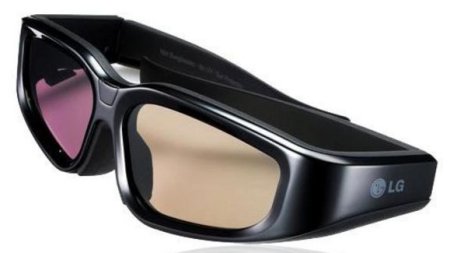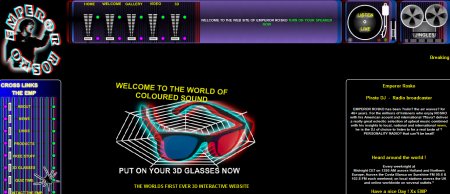With TV services keen to push the third dimension of telly, we can finally throw away the red and blue specs, and get a decent 3D home experience. But is it worth it, and how does it work? Here’s our overview of 3D tech.
|
Listen to FrequencyCast Show 56 – Focus on 3D
|
3D Telly Tech:
Our transcript of Show 56’s 3D TV technology summary…
Carl:
… fully loaded, thank you. And in today’s Focus, I see you have it on your Kindle again, Pete – good boy. What are we focusing in on today?
Pete:
Three things to talk about: first off, terminology for TV, specifically 3D and HD. Then we’re talking about piping TV around the home, and then we have a new feature – more on that shortly.
 Carl:
Carl:
Oh, I’m looking forward to the new feature. Let’s start with 3D.
Pete:
OK, now we have to thank Drew Andy in our forum, who suggested, how about a 2D audio review of 3D TV systems, formats available and what’s coming? So yeah, that sounded good – we’ve not really done 3D in much detail, so we thought we’d give that one a go. We nearly went with Michael Johnson’s suggestion, which is to talk about Apple TV, but maybe that one’ll come up next show.
Carl:
All right – looking forward to that. Let’s move on.
Pete:
Now, we’ve done some good watching of 3D, haven’t we? We’ve seen all the various different types of 3D. Do you remember the different formats?
Carl:
Yes, I have seen several formats. There’s the active and the passive, isn’t there? – is that right?
Pete:
There’s actually four formats. Now, I’m going to make you laugh now. Turn round, shut your eyes.
 Carl:
Carl:
OK. When you’re ready.
(Both laugh)
Carl:
God, you almost look like you’ve got a pair of Oakleys on! Are you a surfer? – a surfer in two colours.
Pete:
Pop those on and look at the red.
Carl:
Oh, good grief. OK, I’m going to take them off.
Pete:
 For those of you not watching in HD, what I’ve done is, I’ve popped on a pair of the old red and blue glasses. These are actually proper plastic ones, none of the paper nonsense, and they kind of wrap around your head a bit. Now, they use a technology called Anaglyphic 3D, which is basically the passive format, and on the screen you get this horrible ghosty effect, and you can use these glasses to get a cheap 3D effect.
For those of you not watching in HD, what I’ve done is, I’ve popped on a pair of the old red and blue glasses. These are actually proper plastic ones, none of the paper nonsense, and they kind of wrap around your head a bit. Now, they use a technology called Anaglyphic 3D, which is basically the passive format, and on the screen you get this horrible ghosty effect, and you can use these glasses to get a cheap 3D effect.
Carl:
OK, so that’s way back in the what … Sixties, Seventies, that was innovated, wasn’t it?
Pete:
Actually before that, in comics and the like.
Carl:
So then we moved on though, to the sort of grey look, didn’t we? Now, are those two different tones of grey, or just one?
Pete:
So what I’ve got on now is what looks like a cheap pair of glasses. Now, I actually nicked these from my local Odeon. These are what you get if you go and see a 3D film, and these are passive glasses. They use a technology called polarisation.
Carl:
I think I must add at this point, you can get these from the National Health, can’t you?
Pete:
Now, do you know how these polarised things actually work when it comes to TV?
Carl:
Not really – is one a slightly different shade than the other? Or are they … I don’t know, no.
Pete:
So it’s like the old Polaroid sunglasses, where you could line the two of them up, and things would go dark or light when you twisted them round. Basically, how it works on the TV is, one line is transmitted in one polarisation, horizontal or vertical, and the next line is the inverse of it. So you actually get two separate bits of information, and the glasses either show you sort of horizontal or vertical, so you can see the 3D image.
Carl:
Ah – very clever.
Pete:
The only downside with this polarisation effect is that you do lose some of the resolution, because half the picture’s broken up, to give you the 3D effect.
Carl:
So you’re saying it’s slower?
Pete:
I’m saying it’s lower quality.
Carl:
Right, OK.
Pete:
Then you have these. Now, these are slightly more expensive, and they’re in this case.
Carl:
It’s a very posh glasses case, isn’t it?
Pete:
Here are these glasses.
Carl:
They’re nice and plastic, aren’t they? Is that an on/off switch on the side?

Pete:
Now we’re talking active. These are the ones you get if you buy yourself an expensive 3D TV to have at home.
Carl:
OK – tell me more.
Pete:
So this uses a technology called alternate-frame sequencing, and it’s rather clever, but it’s a little bit odd. So these glasses have a thin layer of liquid crystal, like the standard LCD stuff in them. What happens is, the TV and the glasses talk to each other, either using infrared, radio waves or Bluetooth, and the TV sends a signal to get the glasses to start flickering at a certain frequency.
Carl:
Oh, that’s very clever. That’s not actually just an automatic thing in the glasses, that’s actually being sent information, so it’s got processors in the glasses. That’s actually far more impressive than I thought, but when you’re wearing them, good Lord, they give you a headache. If you’re not looking at a screen, they’re like flickering.
Pete:
When you put a voltage on each of these lenses, they go black. So alternately, it’s blacking out the left eye, then the right eye, then the left eye, then the right eye, at a frequency of somewhere upwards of 120Hz, so 120 times a second. Each one is going black/light, black/light.
Carl:
Why are these better than other types, then?
Pete:
Well, you don’t get that horrible ghosting effect that you can get with the other types of glasses, and it doesn’t mess with the colour, which of course the other ones do.

Carl:
Right, OK. Is there any further developments on this style of technology? Or is that the pinnacle at the moment?
Pete:
That is the best home 3D that you can get at the moment, using these glasses. There are a few things that it’s worth pointing out with these. For a start, you can’t share glasses. So if you have a set of glasses for your particular Sony 3D TV, and you go round to your mate’s house, the glasses aren’t going to work. They are tied to different manufacturers.
Carl:
Right, OK – that’s not a good thing. How many pairs of glasses can you get?
Pete:
Some TVs give you one set, some don’t give you any at all. The glasses are anything from about £75 upwards.
Carl:
Oh dear – you’re adding more and more cost to your TV. So a family of five have got to go out and spend another 400 odd quid on sunglasses?
Pete:
Yeah, exactly. So that is the latest technology, these are called active shutter or LCD shutter, depending on the terminology. You can see a little bit of a flicker – when we were looking at a few sets, if you start looking at something like a fluorescent light bulb tube, you can really start noticing the flicker, can’t you?
Carl:
Well yeah, especially fluorescents, because they’re at 50Hz, and then you’ve got your eyes going at 120, so it’s all going out of synch, isn’t it, really?
Pete:
And I don’t know if you remember, a few shows ago when we very first talked about the first TV set, we read the warning that comes with it, which is: Don’t watch it for too long, don’t sit too close, if you’re susceptible to epilepsy, you should be careful – a whole bunch of health warnings.
Carl:
Yeah, you had to be straight edged to watch TV, didn’t you?
Pete:
That’s right, no alcohol while watching TV, no operating heavy equipment while watching TV either, if I remember.
So you asked what was next – well, we are fairly close to a brand new type of technology, which is called (and I’m going to mispronounce this) autostereoscopy.
Carl:
Easy for you to say. Go on!
Pete:
So this gives you 3D, but without wearing glasses.
Carl:
Now – that’s interesting. How?
Pete:
So you’ve got your LCD TV, and what they do is, they’ve got a mesh that goes over the TV, that’s got little diagonal slits in it. Some slits go that way, some slits point off to the left, and some slits point off to the right. So in other words, as you look at a TV, some of the pixels are going to be blocked off, so you can only see them from one angle, and some you can see from the other eye through the other angle.
Carl:
OK, now I like this better. This is like, sort of surround sound, without using more than two speakers. It’s like using the phase concept. So this is kind of visual phase, isn’t it?
Pete:
Kind of, yeah. Now, I thought for a minute, when you said “it’s like”, you were going to say it’s like lenticular printing.
Carl:
I was going to! It just rolls off the tongue, doesn’t it?
Pete:
Lenticular printing – you remember you used to get cereal boxes that had those 3D things in, that you turned the card, and you get a different effect?
Carl:
Now, unfortunately I’m not showing my age here, because I don’t know what you’re talking about. I think that’s a different generation.
Pete:
You know full well what I’m talking about – those things where, if you look at a card, and you tilt the head, you get a different effect. That effectively is using this lenticular technology, and that’s what this particular new type of 3D’s using, so that you can see 3D without the extra need for glasses. You do have to be dead square on, which does make it a little bit difficult for people in the room watching with you, but they’re getting there – they’re making some changes to make this better.
Carl:
That sounds quite good, actually. Have we seen one of these?
Pete:
It’s not actually out in the commercial world yet. Apparently in August, Toshiba said they were planning to bring one of these TVs to market by the end of the year, but we are going to see this technology a little bit sooner, and in fact it should already be in a few people’s hands now.
Carl:
Oh yeah – in what format?
Pete:
The new Nintendo, the Nintendo 3DS, which comes out at the end of September, uses this technology to give you a 3D effect.
Carl:
Wow! – I’m going to go and buy one, just to try it.
Pete:
That’s pretty much all I wanted to mention about 3D, with one exception. We just want to mention Ian Coxall.
Carl:
No, it’s not Ian Coaxial – it’s not an adapter or an attachment for an aerial, is he?
Pete:
Now, for legal reasons, we do have to mention Ian Coxall whenever we talk about 3D, because he is our 3D expert. Those keen eared listeners amongst us will remember that, way back in show no 36 …
Carl:
I know what you’re going to say – he told us to put on a pair of sunglasses and remove one of the lenses, and then watch that bit from Star Trek, didn’t he?
Pete:
Spot on – there you go. He said, “It’s a well-known fact that a bright image travels along the optic nerve faster than a less bright image. One eye therefore must view the image through a neutral density filter, ie, one side of a pair of sunglasses”.
Carl:
I’m glad you wrote that down.
Pete:
When we first talked about this, we were a little bit dubious, but what Ian told us to do, and what we would ask you to do as well, if you want to see something really, really clever … get a pair of sunglasses, and be prepared to put one lens over one of your eyes. Then get yourself a copy of any piece of video where the camera circles around two stationery people. Now, Star Trek Insurrection does this, and Ian told us that the time index 32 minutes, 50 seconds – stick a filter over your left eye, and watch as the camera goes round Data and Picard as they’re on the alien planet, and you do see a really impressive 3D effect.
Carl:
Thank you again for that, Ian.
Pete:
There you go – so Ian is convinced that we don’t need any of this active, flashy, lenticular thingy technology – you can just do it with a broken pair of sunglasses.
Carl:
I’m for that, Ian – I like your cheap way of doing it.
Pete:
Just wrapping up on our look at 3D – a reminder that Sky’s 3D channel launched officially on 1st October, and it’s part of the Sky HD package. Oh – and if you have a set of red and blue glasses handy, there’s a great website we want you to look at. Now Carl, do you remember many years ago, we worked together in local radio?
Carl:
We certainly did, yes – it wasn’t my fault.
Pete:
And we worked with a very famous radio star, who was out on Radio Caroline and Radio One.
Carl:
Great – the Emperor Rosko – what a man!!
Pete:
There you go! Well, Rosko has launched a rather novel website – the world’s first fully 3D website, and it’s rather impressive. Have a look at theemperorrosko.com, and also fans of the Emperor can check him out on the radio on Big L – some links up on our show notes.
Jingle:
“Emperor Rosko!”
Emperor Rosko:
“Hi everybody, this is the Emperor Rosko, and we’re in 3D – welcome aboard!”
Jingle:
“The fastest thing in the air!”
Emperor Rosko:
“Put your seatbelts on, and stand by to view like never before.”
Jingle:
“The Rosko Show”
Carl:
Fantastic – only the Emperor would do something that fantastic.
Pete:
There you go – well worth a look, and there’s a little sneaky spider crawling around the web that’s something to watch out for, too.
Carl:
Cool – check him out. So that’s 3D. What about HD?
Followed by our HD Questions Answered Transcript
|
Listen to FrequencyCast Show 56 – Focus on 3D
|
